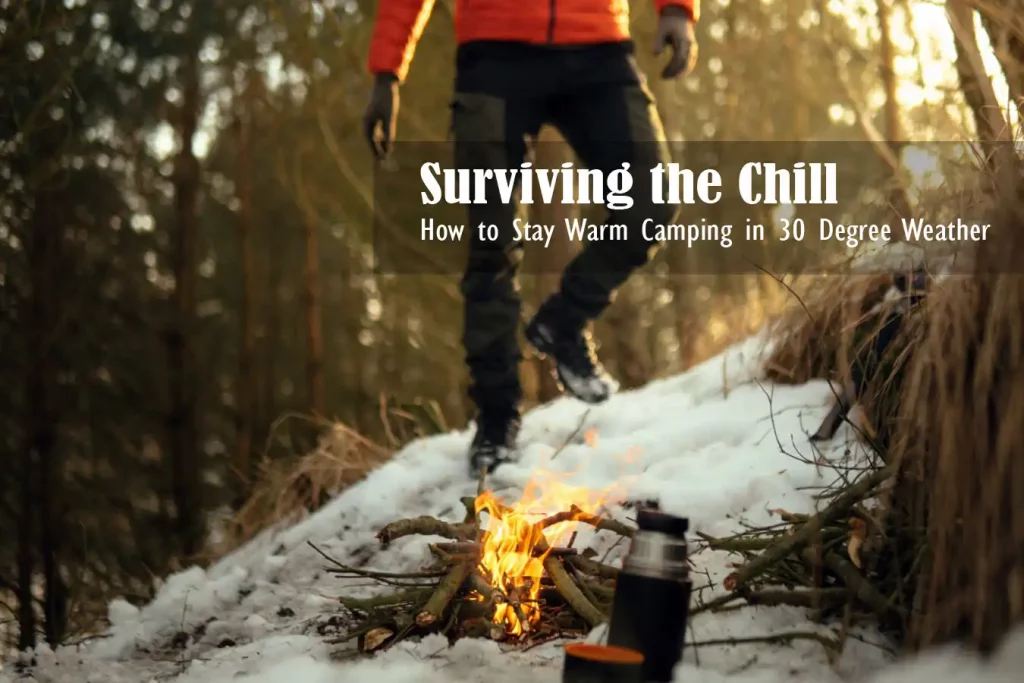Wondering how to stay warm camping in 30 degree weather? Not to worry, I’m here to guide you on how to beat the chill.
Camping gives us the opportunity to disconnect from the robotic lives and reconnect with nature. But camping in 30 degree weather is difficult for beginner campers.
From my personal experience, I’ll share some techniques here to stay safe on camping in the cold weather condition.
Stay connected.
Understanding the Challenge of 30-Degree Weather
For many, camping in 30 degree weather might sound like an unusual choice. But, it can be an extraordinary experience if we equip ourselves with the right knowledge and gear. So what makes 30-degree weather so challenging? Let’s find out.
What Does 30-Degree Weather Feel Like?
First off, it’s important to note that 30 degrees isn’t just a bit chilly—it’s bona fide cold weather, especially when you’re camping out in the elements. It’s not quite the shivering, teeth-chattering cold you might experience in sub-zero temperatures, but it’s still cold enough to make you uncomfortable if you’re not prepared.
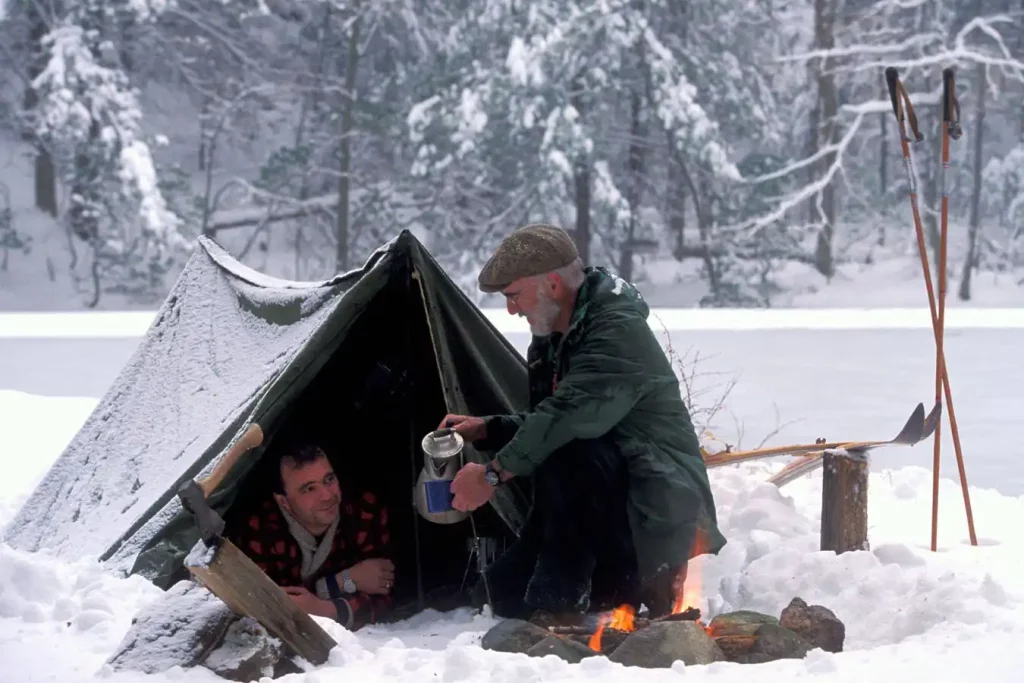
In these temperatures, everything around you cools down significantly. The ground beneath you is cold, the air around you holds a sharp chill, and even the inside of your tent can feel like a walk-in refrigerator. One of the main challenges of camping in such conditions is maintaining body heat and keeping your camping area warm. But don’t worry, we’re about to share some expert tips on just how to do that!
Impact of Cold Weather on the Body
Now, it’s not just about comfort. Cold weather can have a serious impact on our bodies. As the temperature drops, our bodies have to work overtime to maintain a safe internal temperature. If we’re not adequately prepared, we risk falling into a dangerous situation—like hypothermia or frostbite.
Hypothermia occurs when your body loses heat faster than it can produce it, causing your body temperature to drop dangerously low. Signs of hypothermia include shivering, exhaustion, confusion, and in severe cases, loss of consciousness.
Frostbite, on the other hand, is a condition where your skin and the tissues beneath it freeze due to prolonged exposure to cold temperatures. Initially, you might notice redness or pain in any skin area followed by a white or grayish-yellow skin area, possibly accompanied by skin that feels unusually firm or waxy.
Understanding these risks emphasizes the importance of keeping warm while camping in 30 degree weather. But don’t worry, with the right preparations, camping in cold weather can be a safe and enjoyable experience.
Preparing for Your 30-Degree Weather Camping Trip
While the thrill of a camping trip in 30-degree weather might send chills down your spine, preparation is the key to enjoying rather than enduring the experience. So let’s look at what steps you can take to ensure you’re ready to tackle the cold.
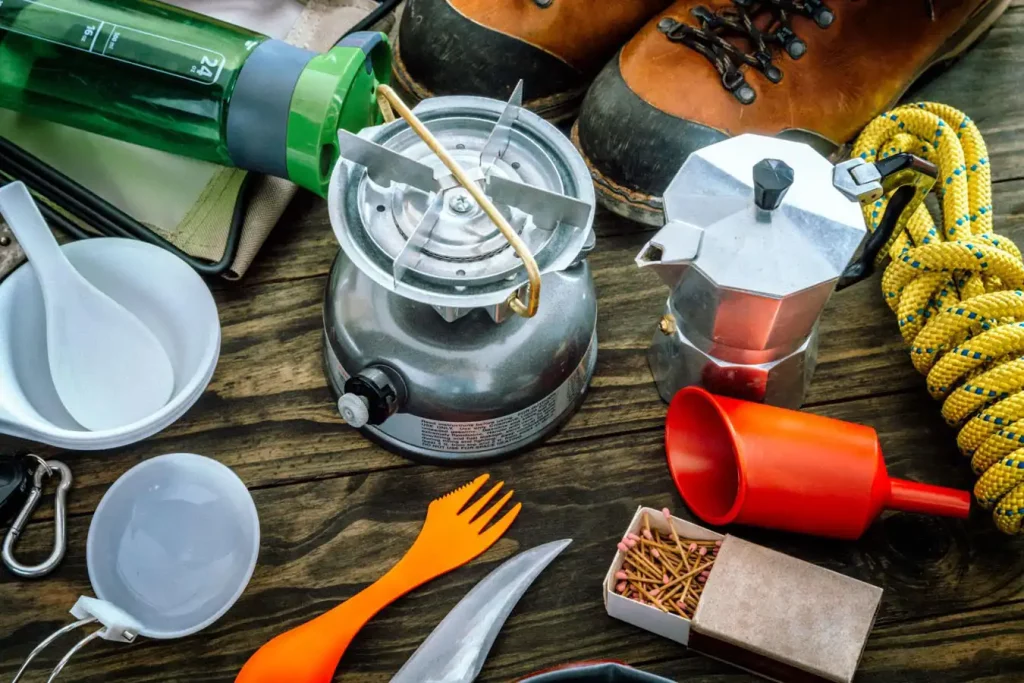
Selecting the Right Camping Gear
The right camping gear can make the difference between a cozy winter camping trip and a cold, miserable one. Essential gear for a cold-weather camping trip includes:
- A 4-Season Tent (Hot Tent): Unlike the 3-season tent, a 4-season tent is designed to withstand harsh weather conditions, including snow and strong winds. Its structure and materials provide excellent insulation and stability.
- Wood Burning Stove: A portable wood-burning stove can be a game-changer. It will allow you to cook hot meals, boil water, and, most importantly, generate warmth.
- High-Quality Sleeping Bag: Look for a sleeping bag (Amazon) rated for temperatures below your expected low. For a 30-degree camping trip, you’ll want a bag rated for at least 20 degrees, if not lower. The better the bag’s insulation, the warmer you’ll stay.
- Camping Pad: A good camping pad (Amazon) will insulate you from the cold ground. Look for a pad with a high R-value, indicating better insulation.
- Tarp: A waterproof tarp (Amazon) can protect your tent from moisture, serve as a wind block, or provide extra insulation if hung inside the tent.
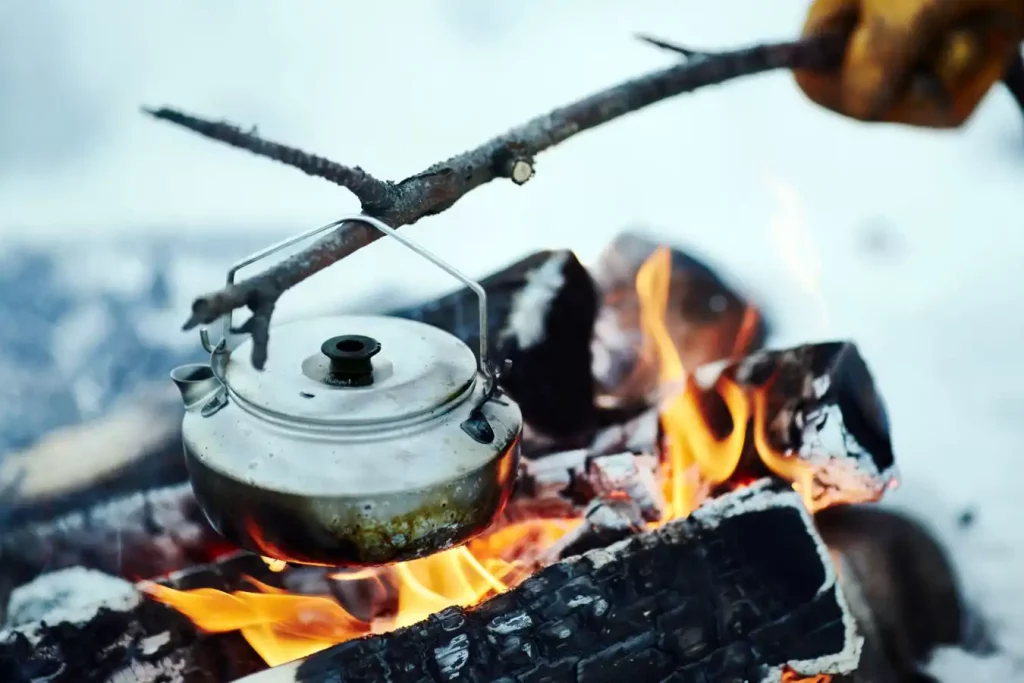
Read more: How to Stay Warm on an Air Mattress
Choosing Appropriate Clothing
Dressing appropriately is key to staying warm. Here’s what to keep in mind:
- Understand the Importance of Layering: The idea is to wear multiple layers that can be added or removed as necessary. Your base layer should be moisture-wicking to keep sweat away, the middle layer should provide insulation, and the outer layer should be waterproof and windproof.
- Choose the Right Clothes: Avoid cotton, which absorbs moisture and can make you cold. Opt for wool or synthetic materials that retain warmth even when wet. Don’t forget warm socks, gloves, and a hat.
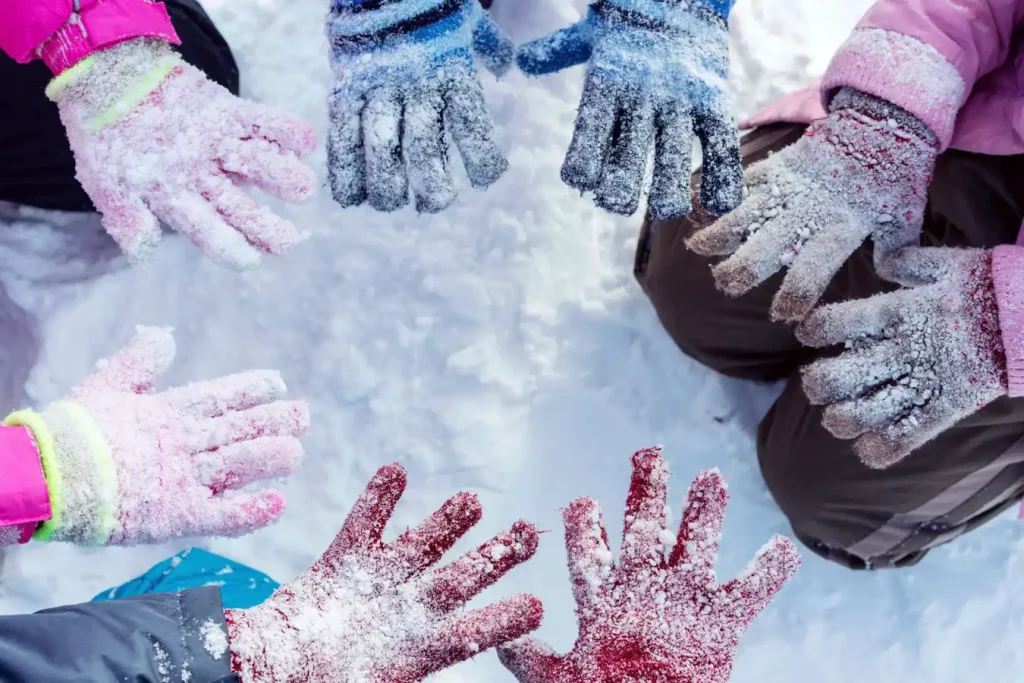
Planning Your Meals
What you eat and drink can greatly affect how warm you feel. Here’s what to consider:
- Stay Hydrated: Even in cold weather, your body loses water through breathing and sweating. Drink plenty of fluids to maintain hydration. Warm liquids can also help raise your body temperature.
- Eat Energy-Dense Foods: Your body burns more calories to stay warm in cold weather. Pack calorie-dense foods like nuts, cheese, dried fruits, and chocolate.
- Hot Meals: A hot meal can be comforting and warming in cold weather. Pre-packaged freeze-dried meals only require hot water and are easy to prepare. Also, never forget to bring camping cooking set to cook over campfire.
Remember, the more prepared you are, the more comfortable and enjoyable your camping in 30 degree weather will be. As the old saying goes, there’s no such thing as bad weather, only bad clothing and equipment!
To know more: How to Keep Air Mattress Warm When Camping
Practical Tips for Staying Warm During Your 30-Degree Weather Camping Trip
Once you’ve prepared appropriately for your cold-weather camping trip, the next step is ensuring you stay warm while you’re out there in the wild. From setting up your campsite strategically to maintaining hydration and nutrition, there are practical steps you can take to stay cozy and warm.
Setting Up Your Campsite
How and where you set up your camp can have a huge impact on your warmth levels. Here are some tips:
- Choose a Spot with Natural Windbreakers: A campsite sheltered by natural features like a hill, trees, or rocks will protect you from biting winds.
- Avoid Valleys and Ridges: Cold air settles in valleys, while ridges can be exposed to harsh winds. Try to set up camp somewhere in between for optimal warmth.
- Use the Sun: If possible, pick a spot that will get morning sun. It will help warm you up after a cold night.
Building and Maintaining the Perfect Campfire
Your campfire will be a crucial source of warmth. Here’s how to build and maintain one:
- Types of Fire: The teepee fire is great for cooking, while the log cabin fire provides long-lasting heat. Learn the different types and their benefits.
- Maintaining the Fire: Once your fire is going, maintenance is key. Keep it at a manageable size and always have enough wood on hand to last through the night.
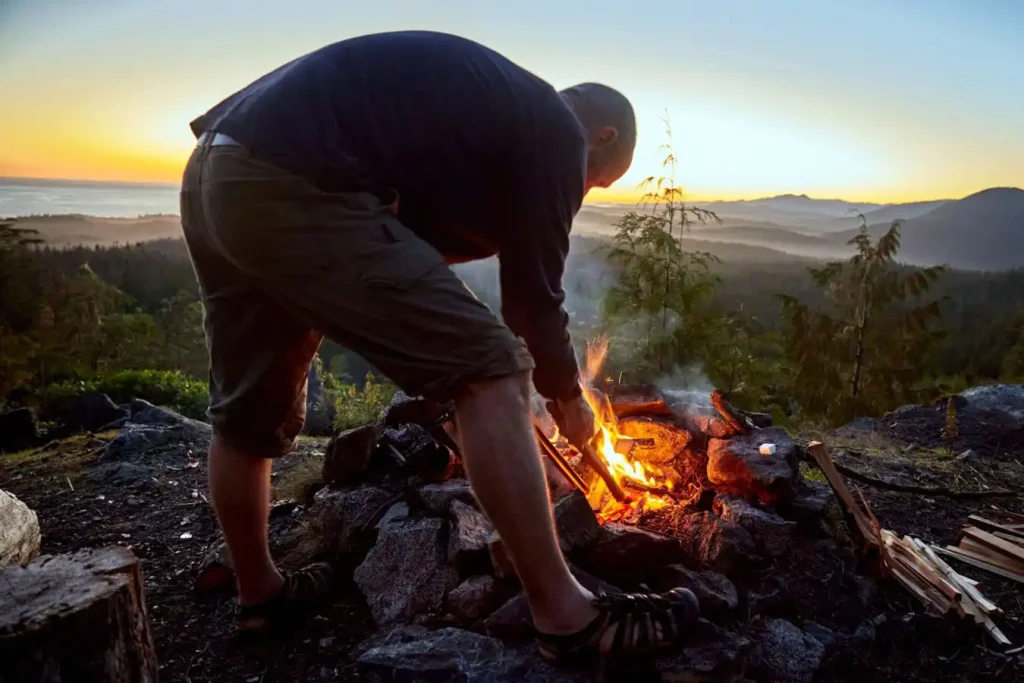
Use Your Camping Gear Effectively
Using your camping gear effectively will optimize its warming capabilities:
- Fluff Your Sleeping Bag: Shake out your sleeping bag and fluff it up before use to maximize the loft and insulation.
- Use a Hot Water Bottle: Fill a durable water bottle with hot water and place it in your sleeping bag to pre-warm it.
- Seal Your Tent: Make sure all zippers and vents on your tent are sealed to prevent drafts.
Physical Activities to Generate Heat
Staying active can help generate body heat:
- Exercise: Simple exercises like jumping jacks or jogging in place can warm you up.
- Stay Busy: Collecting firewood, cooking, setting up the camp—these activities not only keep you occupied but also keep you warm.
Maintaining Hydration and Nutrition
Staying properly hydrated and nourished is vital:
- Hydration: Drink plenty of water during the day. Avoid alcohol and caffeine, which can dehydrate you.
- Nutrition: Eat regular, high-calorie meals to give your body the energy it needs to stay warm. Hot meals and drinks are especially beneficial in cold weather.
Staying warm while camping in 30 degree weather is about more than just packing the right gear. It’s about knowing how to use that gear effectively and understanding how your body reacts to the cold.
In short, to stay warm while camping in 30-degree weather, pack a 5-degree sleeping bag and a premium mat. Dress in a base layer, additional clothing layers, including a wool jacket, insulated hand gloves, snow shoe and thick wool socks. So, stay active, eat well, and keep that fire burning!
Learn more on: How Cold is Too Cold for Hammock Camping
Safety Measures and Emergency Preparedness
Despite our best preparations, sometimes Mother Nature throws a curveball. From recognizing signs of hypothermia and frostbite to packing essential emergency gear, your safety is paramount while camping in 30 degree weather.
Recognizing and Responding to Hypothermia and Frostbite
Understanding how to recognize and respond to hypothermia and frostbite can save a life.
- Hypothermia starts subtly, with symptoms like shivering, slurred speech, and confusion. It’s critical to take immediate action if these signs are noticed, which includes seeking shelter, adding layers of warm clothing, and if possible, consuming warm drinks.
- Frostbite tends to affect extremities like fingers, toes, and noses first. Signs include numbness, aching, or pale and waxy skin. If you suspect frostbite, avoid rubbing the area. Instead, gently warm it using body heat or a warm (not hot) water bath.
Essential Emergency Gear
The right emergency gear can make a world of difference. Here’s what you need:
- Insulated Gloves: Protect your fingers, which are particularly susceptible to frostbite.
- Hand Warmers: These can be a quick and convenient way to bring warmth to cold hands and feet.
- Emergency Sleeping Bag: A compact, lightweight, yet warm sleeping bag is essential.
- Emergency Blankets: Also known as space blankets, these reflect body heat and are invaluable in emergencies.
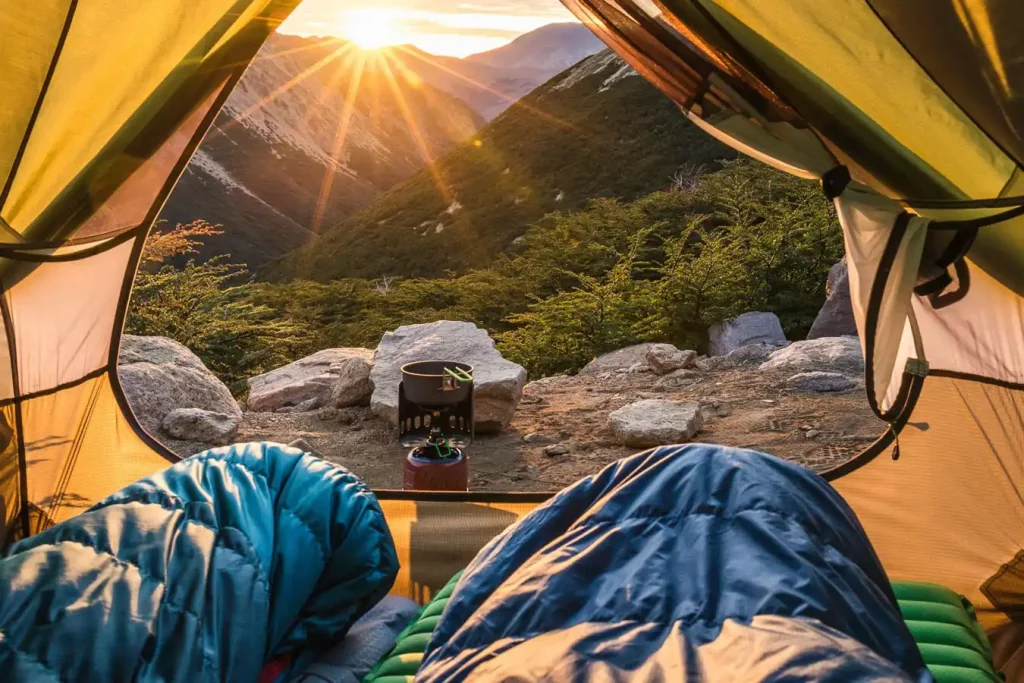
Innovations in Cold Weather Camping
The world of camping has evolved dramatically in recent years, with new technologies making camping in cold weather easier and more comfortable.
- Insulated Tents: Today’s tents often come with inbuilt insulation, which can significantly increase their warmth.
- High-Tech Clothing: From heated gloves and socks to smart thermal underwear, today’s camping clothing is designed with the latest technology to keep you warm.
- Portable Heaters: Portable propane heaters can be a game-changer for cold-weather camping, providing warmth safely and efficiently.
- Solar Chargers: Solar-powered chargers ensure that your devices (such as GPS or cell phones) remain charged, keeping you connected and safe.
Embracing these innovations, alongside good old-fashioned preparation and know-how, can truly enhance your cold-weather camping experience. So don’t let the cold deter you! With the right preparation, gear, and attitude, camping in 30 degree weather can be an adventure you’ll cherish forever.
FAQs about Camping in 30 Degree Weather
What temperature is too cold for camping?
How to stay warm camping in 40-degree weather?
How to stay warm camping in 20-degree weather?
How do you stay warm in 30 degrees camping?
Is 30 degrees too cold to camp?
Is it hard to camp in 30-degree weather?
Can I sleep in my car at 30 degrees?
Is it warmer to sleep in a car or tent?
How long is it safe to be outside in 30-degree weather?
Final words for Camping in Cold Weather
Overall, to stay warm while camping in 30 degree weather, it’s crucial to layer your clothing, select a well-insulated tent and high-quality sleeping bag, maintain a steady campfire, consume warm, calorie-dense foods and drinks, engage in physical activities to generate heat, and be equipped with essential emergency gear for safety.
Whether you’re an experienced outdoors-person or new to the game, camping in 30 degree weather is an adventure that demands preparation. From selecting the right gear and clothing to knowing how to recognize and respond to cold-induced conditions like hypothermia and frostbite, every detail matters. Remember to plan your meals and stay hydrated to maintain your energy levels. Know how to set up a warm campsite and how to use your camping gear effectively.
While the cold can be challenging, remember, it can also be a lot of fun. With the right preparation and mindset, a 30-degree camping trip can be a memorable, invigorating experience. So gear up, stay safe, and happy camping!
Read next: What is a Hot Tent? A Overview of Hot Tent Camping

